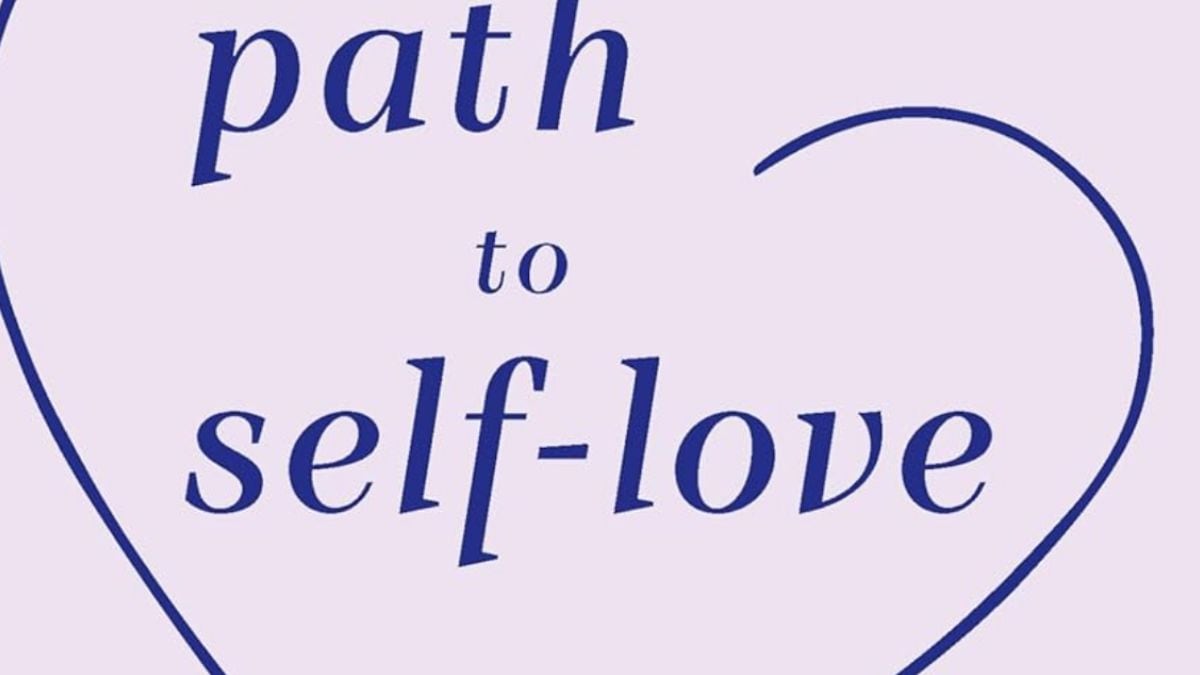Here’s an excerpt from The Path To Self Love.
SELF-LOVE I S MORE THAN A HASHTAG
By Ruby Dhal
‘Self- love’ has become an enormous part of our daily lingo and is
scattered through our everyday conversations. We advise our friends
to use ‘self- love’ when they’re struggling, even if we don’t fully understand
their circumstances. For instance, when your best friend tells
you about an argument that she had with her controlling partner,
and you advise her to ‘Love yourself, girl, and cut him off.’ The
word ‘self- love’ also frequently appears in our social media captions
and hashtags: ‘Just having a self-care day, #bubblebath
#putyourselffirst #selflovematters’, or, ‘A book and me is all I need,
#caramellatte #takecareofyourself #selflovefirst’. I’d need more than two hands to count the number of times I’ve opened TikTok to find another ‘self- care
day vlog’ posted by an influencer, sprinkled with shots of painfully early wake-ups,
even more painful-looking yoga positions, coffeemaking ASMR (this is both weird and alluring), a bunch of_wholesome_ and healthy meals
in cafés, walks to the park and runs in the middle of nowhere, as
though it were completely normal to place a tripod in a random
street and record yourself running back and forth. Well, it’s the new
normal. I’m not complaining, because those vlogs can be so therapeutic
both for the people who post them, and the people who watch them, and I’m all about other people practising self-care and living their best lives. I’m merely pointing out that there is another–incredibly important– side to selflove
that we often seem to overlook. A side that can change your life for the better. It’s that side of self-love that we will focus on here. Through practising self- love, you can live your best life– but self-love doesn’t have to be limited to running in the park and early morning yoga. I’m not saying these activities aren’t important, but there is so much more to self-love than we may see around us, and this book will help you access those forms of self-love because you will need them on your own healing journey.
Watching a movie, spending time with friends or going for a walk outside are all part of self-love– they’re the things that come to mind straight away when we think of self-
love, and they’re an important part of finding joy every day. They promote happiness
and create a healthy balance in many people’s lives, but they can be categorised as ‘easy self-love’. This form of self-love needs to be separated from the self-love that we’re talking about in this book; the kind of self-love that can change your life forever: ‘tough self-love’. Think of these as two sides of the same coin. You can’t perform one without the other, and each side is important in its own way. But remember, it’s the tough stuff that allows you to get to the easy stuff. It’s the tough stuff that is the most life-changing. Easy self-love means improving your mental, emotional and
physical well-being through activities that lift your mood, increase your joy or otherwise improve your vibe. Whatever you want to call it. For instance, to improve your mental health, you meditate, journal, travel, cook, read, take a walk, etc. To improve your emotional health, you meet up with your loved ones and have adventures, and to improve your physical health, you go to the gym, eat healthy, go to sleep on time, do yoga. Filing these things under ‘easy self-love’ doesn’t mean that they don’t take much out of you. They can. Easy self-love means doing anything that makes you feel good and that is done with the intention to improve the quality of your life. Often the ‘feel good’ sensation can come much later, but the intention is always there; for example, when you lift weights at the gym, it’s painful at first but worth it for the high you get afterwards. When you practise easy self-love, you become aware that you’re doing something to take care of yourself.
In comparison to tough self-love, easy self-love is simpler. We all see it, hear about it, scroll through our Instagram feeds and watch others indulging in it. We believe that we know what self-love is when we come across it. But tough self- love isn’t as apparent.
Practising tough self-love means doing the hard work. For instance, asking yourself the difficult, exhausting questions, sitting alone with your icy thoughts, trying to unpick the emotions that lie underneath, going to therapy, perhaps joining an AA meeting and admitting that you have a drinking problem, cutting off people, setting your expectations, apologising, getting closure, rewinding the reel of your past to pluck out traumatic events that have caused you to have low self- esteem or trust issues, or to become non-committal, and trying to iron them out so you can move past the past. Make sense?
Tough self-love is tough. Both easy and tough self-love practices are based on the intention to take care of yourself– although with tough practices, it’s a lot
more indirect. With easy self-love, you acknowledge that you’ve had a rough day, so you go to see your friend for dinner and unwind. With tough self-love, if you’ve had a rough day and you have an appointment with your therapist later, that will take a lot out of you, and you probably won’t feel good in the moment. Practising easy self-love
usually elicits positive emotions (such as happiness, laughter, excitement, love) and practising tough self-love usually elicits negative emotions (such as sadness, a feeling of loss, tears, regret, guilt), which can be harder to do. But the end result of tough self-
love will bring you long-lasting happiness, allowing you to make peace with your past and encouraging you to exercise easy self-love to improve the quality of your life.

